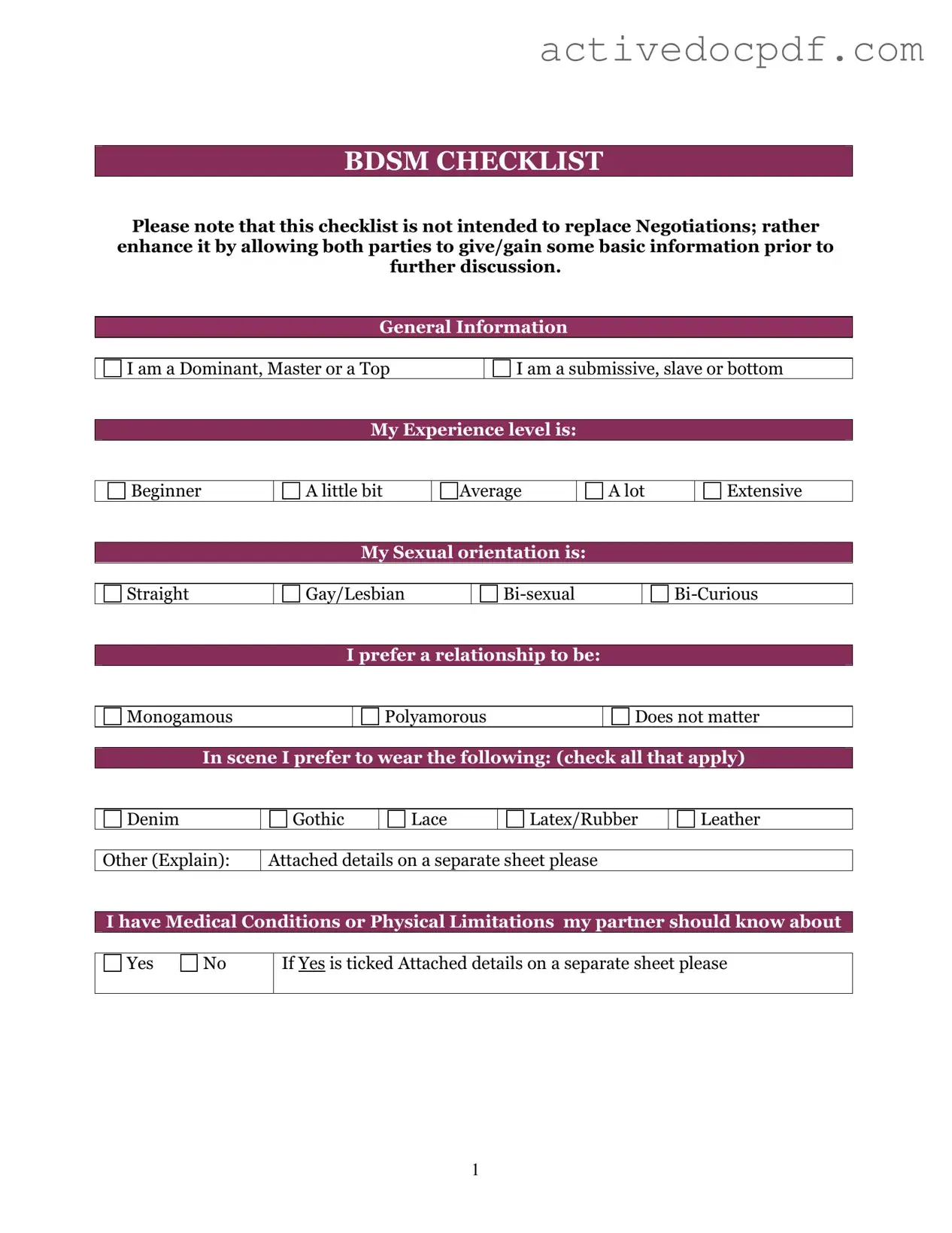The BDSM Checklist Form is a tool designed to help individuals explore and communicate their interests, boundaries, and consent in the context of BDSM practices. It serves as a guide for partners to understand each other's preferences and limits, fostering open dialogue and ensuring safety during activities.
Why is it important to use a checklist?
Using a checklist is crucial for several reasons. First, it encourages honest communication between partners about their desires and limits. Second, it helps identify potential risks associated with certain activities. Lastly, it promotes consent, ensuring that all parties are on the same page regarding what is acceptable and what is not.
To fill out the BDSM Checklist Form, start by reviewing the various activities listed. For each activity, indicate your interest level using a simple scale, such as:
-
Yes: I am interested and willing to try this.
-
No: I am not interested in this activity.
-
Maybe: I am open to discussion or need more information.
After completing the checklist, discuss your responses with your partner to ensure mutual understanding.
Can I change my answers later?
Absolutely. Preferences and comfort levels can evolve over time. It is essential to revisit the checklist periodically and communicate any changes to your partner. This ongoing dialogue helps maintain a healthy and consensual relationship.
What if my partner has different interests?
Differences in interests are common and can be addressed through open communication. Discuss your respective preferences and see if there are activities that you both enjoy. Compromise may be necessary, and it's important to respect each other's boundaries while exploring new experiences together.
Yes, the BDSM Checklist Form is an excellent resource for beginners. It provides a structured way to explore interests without feeling overwhelmed. Beginners can use the checklist to identify what they might want to try and to communicate those interests with potential partners.
How can I ensure safety while engaging in BDSM activities?
Safety in BDSM is paramount. Always establish clear consent and boundaries before engaging in any activity. Use safe words to communicate during play, and regularly check in with your partner to ensure comfort and safety. Additionally, educate yourself about the risks associated with specific practices and take necessary precautions.
What should I do if I feel uncomfortable during an activity?
If you feel uncomfortable at any point during an activity, it is crucial to communicate that feeling immediately. Use your established safe word or signal to pause or stop the activity. Prioritizing comfort and consent is essential in any BDSM relationship.
BDSM Checklist Forms can be found online through various BDSM community websites, forums, and educational resources. Many organizations dedicated to sexual health and education also provide downloadable versions of the checklist.
Can I use the checklist for non-BDSM relationships?
While the BDSM Checklist Form is specifically tailored for BDSM practices, the principles of open communication and consent can be applied to any relationship. Adapting the checklist to suit your needs can facilitate discussions about boundaries and preferences in various contexts.
